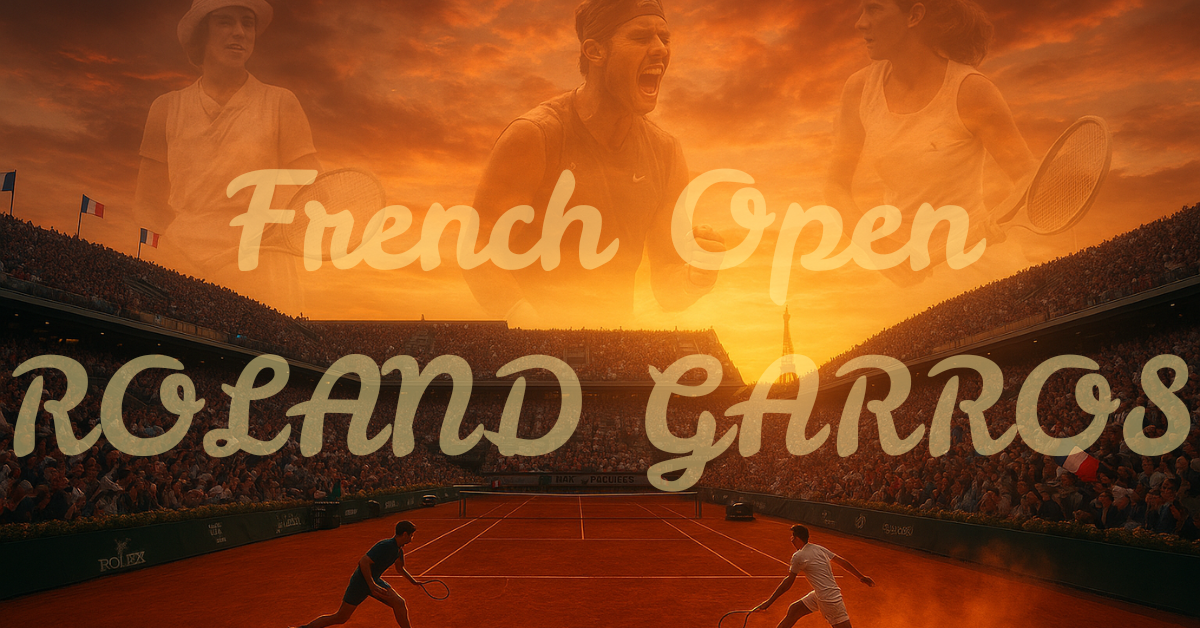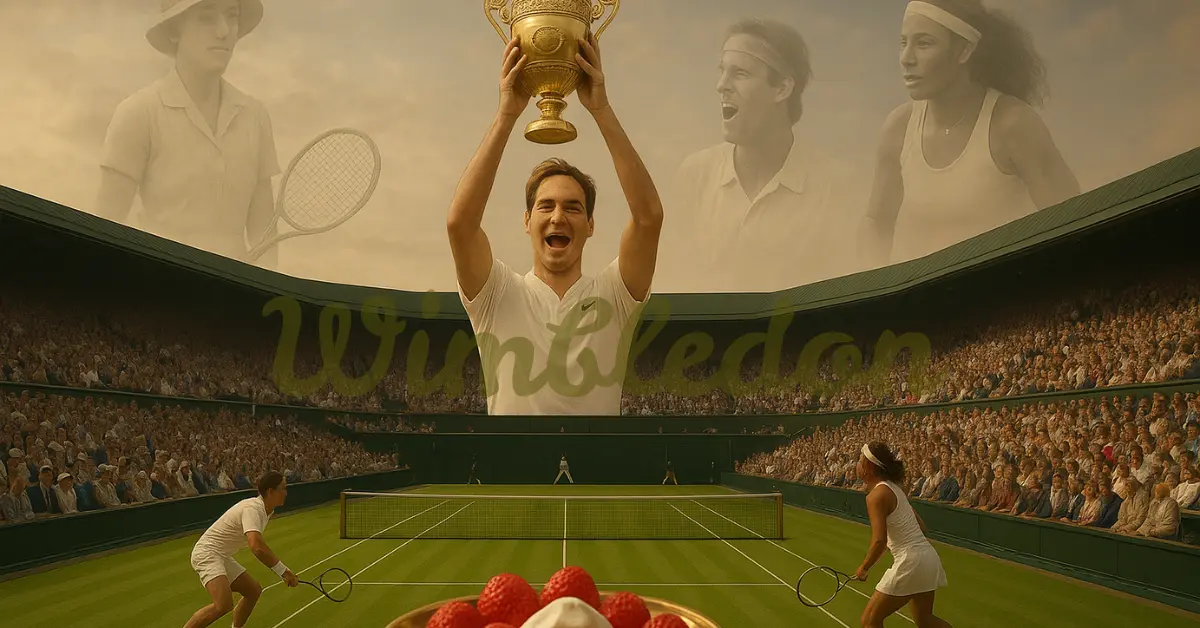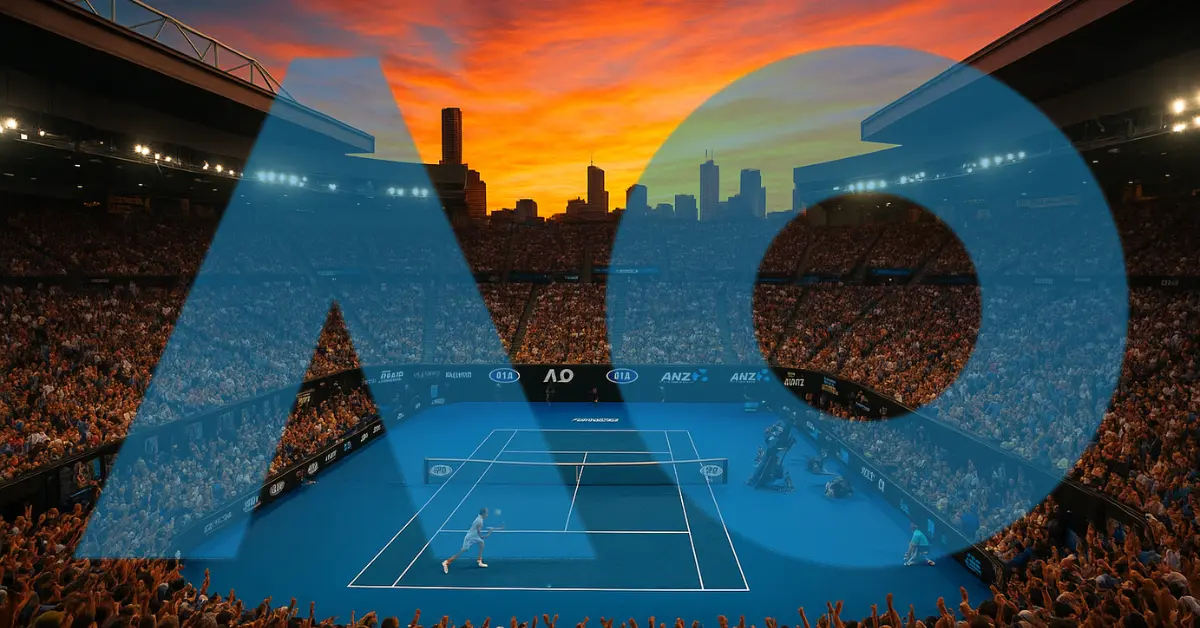The clay courts of Roland-Garros tell a story unlike any other tennis venue. While Wimbledon boasts grass tradition and the US Open showcases hard court power, the French Open presents tennis at its most grueling and strategic. The distinctive red clay surface transforms the game into a marathon of endurance, patience, and tactical brilliance that has captivated audiences for over a century.
Founded in 1891, this tournament—officially known as Roland-Garros—serves as the second Grand Slam of the tennis calendar year. What began as a modest French championship has evolved into one of sport’s most prestigious events, where legends are born and tennis history is written one clay-court rally at a time.
This journey through French Open history reveals how a national championship became a global phenomenon, shaped by wars, social change, and the relentless pursuit of tennis excellence.
Why the French Open stands out among tennis Grand Slams
The French Open commands respect for reasons that extend far beyond its Grand Slam status. Several factors distinguish this tournament from its three counterparts:
- Unique clay surface: The only Grand Slam played on clay courts, demanding specialized skills and strategies
- Physical endurance test: Matches can stretch for hours due to the slower surface and longer rallies
- Tactical complexity: Players must master sliding, defensive positioning, and patience
- Weather unpredictability: Rain delays and wind conditions add strategic layers to matches
Quick snapshot: Founded in 1891, also called Roland‑Garros
Key facts about the tournament’s identity and timing:
- Official name: Championnats de France (French Championships), commonly called Roland-Garros
- Calendar position: Second Grand Slam of the year, typically held in late May through early June
- Location: Stade Roland-Garros in the 16th arrondissement of Paris
- Surface: Red clay courts made from crushed brick and stone
- Duration: Two weeks of competition featuring singles, doubles, and mixed doubles
Thesis: An overview of the evolution, significance, and iconic moments
This exploration traces the French Open’s transformation from a local championship to tennis’s most physically demanding Grand Slam, examining the key moments, legendary players, and cultural significance that have shaped its unique identity in the tennis world.
Origins and Early Years of the French Open History
The Beginning of French Open History: Championnat de France (1891)
The tournament’s modest beginnings reflect tennis’s amateur roots in late 19th-century France:
- First tournament: Held in 1891 as the Championnat de France
- Initial venue: Racing Club de France in Paris
- Restricted entry: Only French tennis club members could participate
- Men’s singles only: The inaugural event featured just one competition category
- Winner: H. Briggs claimed the first title in the men’s singles division
Expansion in French Open History: Women’s and Doubles Events
The tournament expanded its scope during its formative years:
- Women’s singles (1897): Added six years after the men’s competition began
- Men’s doubles (1902): Introduced team competition for male players
- Women’s doubles (1907): Expanded opportunities for female competitors
- Mixed doubles (1902): Combined gender competition added early in the tournament’s history
- Growing popularity: Each new category attracted more spectators and participants
French Open History During World War I and Venue Shifts
The early 20th century brought challenges and changes:
- War suspension: Tournament canceled from 1915-1919 due to World War I
- Venue changes: Competition moved between various Paris clubs and locations
- Limited international presence: Remained primarily a French national championship
- Amateur restrictions: Strict amateur-only rules limited participant pool
- Post-war resumption: Tournament gradually rebuilt its reputation and attendance
Grand Slam Era in French Open History and the Roland-Garros Move
Open to International Amateurs (1925)
A pivotal decision transformed the tournament’s global significance:
- International expansion: First opened to players from all nations in 1925
- Immediate impact: Foreign players brought new styles and increased competition level
- Notable winners: International champions began claiming French titles
- Media attention: Global participation attracted international press coverage
- Prestige growth: Tournament gained recognition as a major tennis championship
Establishment at Stade Roland‑Garros (1928)
The tournament found its permanent home with significant implications:
- New venue construction: Purpose-built tennis facility in Paris’s 16th arrondissement
- Named for aviator: Stadium honored Roland Garros, World War I pilot and tennis enthusiast
- Enhanced facilities: Improved spectator capacity and player amenities
- Standardized courts: Consistent clay court surfaces for all matches
- Grand Slam status: Became part of tennis’s four major championships
World War II’s Impact on French Open History
The war years presented complex challenges:
- Continued operation: Tournament held during German occupation (1940-1945)
- Restricted participation: Limited primarily to German and French players
- Controversial legitimacy: Post-war debate over whether wartime titles should count
- Recovery period: Several years needed to restore international participation
- Lasting impact: War years created gaps in tournament records and traditions
Open Era Milestones in French Open History
Professional Players Allowed (1968)
The Open Era revolutionized tennis and the French Open:
- Professional integration: First year professional players could compete alongside amateurs
- Increased prize money: Financial incentives attracted top global talent
- Higher competition level: Professional participation elevated match quality significantly
- Media expansion: Television coverage brought matches to global audiences
- Commercial growth: Sponsorship and marketing opportunities multiplied rapidly
Equality Milestones in French Open History
The tournament gradually embraced gender equality:
- Equal prize money (2006): Men’s and women’s champions received identical financial rewards
- Court assignments: Top women’s matches scheduled on premier courts
- Media coverage: Increased attention for women’s competition
- Scheduling parity: Women’s finals given equal promotional treatment
- Leadership roles: Women gained positions in tournament administration
Venue Upgrades and Innovations in French Open History
Recent decades have seen significant facility improvements:
- Court surface standardization: All courts converted to consistent clay composition
- Technology integration: Hawk-Eye line-calling system introduced for clay courts
- Spectator amenities: Enhanced seating, concessions, and accessibility features
- Player facilities: Modern locker rooms, practice courts, and training areas
- Broadcast infrastructure: State-of-the-art television and streaming capabilities
Tiebreak Innovation
Scoring modifications adapted to clay court challenges:
- Final set rules: Special tiebreak procedures for deciding sets
- Time management: Efforts to control match duration on slow clay courts
- Player welfare: Considerations for physical demands of clay court tennis
- Spectator experience: Balancing tradition with modern viewing preferences
- Competitive fairness: Ensuring equitable outcomes in extended matches
The Clay Court Factor in French Open History
Unique Playing Surface
Clay courts create a distinctive tennis environment:
- Surface composition: Crushed brick, stone, and shale create the red clay appearance
- Ball behavior: Slower bounces and higher kicks compared to hard courts or grass
- Player movement: Sliding techniques essential for effective court coverage
- Match duration: Longer rallies and extended match times are common
- Maintenance requirements: Daily watering and rolling needed to maintain playing conditions
Players Favored and Foiled by Clay
The surface creates specialists and challenges versatile players:
- Clay court specialists: Players who excel primarily on this surface type
- Style advantages: Defensive players and heavy topspin hitters often succeed
- Movement specialists: Athletes with superior sliding and court coverage skills
- Challenged players: Serve-and-volley players and hard hitters may struggle
- Adaptation requirements: All players must modify techniques for clay court success
Rare Versatility
Few players master all surfaces equally:
- Surface transitions: Moving between clay and other surfaces requires significant adjustments
- Seasonal specialists: Some players focus exclusively on clay court seasons
- Equipment changes: Different shoes, strings, and tactics needed for clay
- Physical preparation: Unique conditioning requirements for clay court competitions
- Strategic evolution: Game plans must account for surface-specific factors
Legends and Records in French Open History
Men’s All-Time Leader
Rafael Nadal’s dominance defines modern French Open history:
- Record titles: 14 French Open singles championships
- Win-loss record: Over 100 match wins with only four losses at Roland-Garros
- Consecutive victories: Multiple streaks of dominant clay court performance
- Generational impact: Inspired new approaches to clay court tennis
- Historical comparison: Surpassed all previous clay court achievement records
Women’s All-Time Leader
Chris Evert established the women’s championship standard:
- Seven titles: Record for most French Open women’s singles championships
- Clay court mastery: Exceptional success rate on clay courts throughout career
- Consistency: Multiple decades of competitive excellence at Roland-Garros
- Playing style: Baseline consistency perfectly suited for clay court success
- Legacy influence: Inspired subsequent generations of clay court specialists
Amateur Era Icons
Pre-Open Era champions laid important groundwork:
- Suzanne Lenglen: French icon who dominated women’s tennis in the 1920s
- Henri Cochet: French champion who helped establish tournament prestige
- International stars: Early foreign winners who elevated tournament status
- Playing innovation: Techniques developed specifically for clay court competition
- Cultural significance: Champions who connected tournament to French national pride
Doubles and Mixed-Doubles Greats
Team competitions have produced memorable champions:
- Successful partnerships: Long-term doubles teams with multiple French Open titles
- Mixed doubles variety: Combinations that succeeded specifically on clay courts
- Specialty teams: Players who focused primarily on doubles competition
- Surface adaptation: Teams that modified strategies for clay court success
- Record achievements: Outstanding doubles performance records at Roland-Garros
Rafael Nadal’s Place in French Open History
Breakthrough & Dominance
Nadal’s French Open journey began with immediate impact:
- 2005 debut victory: Won first French Open at age 19
- Immediate dominance: Established supremacy from his first tournament appearance
- Playing style: Aggressive topspin and defensive skills perfectly suited for clay
- Physical approach: Intense conditioning and match preparation
- Mental toughness: Exceptional performance under pressure situations
Historical Impact
Nadal’s achievements transcended individual success:
- Record redefinition: Set new standards for clay court excellence
- Tactical innovation: Influenced how players approach clay court strategy
- Tournament prestige: Enhanced French Open’s status through exceptional performances
- Fan engagement: Created global interest in clay court tennis
- Inspirational legacy: Motivated new generations of clay court specialists
Legacy and Cultural Impact
The French Open occupies a unique position in tennis and broader culture:
- Cultural significance: Represents French sporting tradition and national pride
- Fashion influence: Roland-Garros fashion choices influence tennis apparel trends
- Tourism impact: Draws international visitors to Paris during tournament weeks
- Tennis development: Promotes clay court tennis globally through elite competition
- Athletic achievement: Provides ultimate test of tennis versatility and endurance
The Clay Courts Continue to Define Tennis Excellence
The French Open’s evolution from a modest French championship to tennis’s most physically demanding Grand Slam reflects sport’s capacity for growth and adaptation. Through world wars, social changes, and technological advances, Roland-Garros has maintained its distinctive character while embracing necessary modernization.
The tournament’s legacy extends beyond championship records and memorable matches. It represents tennis at its most strategic and physically challenging, where patience, endurance, and tactical brilliance determine success. Every spring, the red clay courts of Paris remind players and fans that tennis excellence requires mastery of diverse skills and unwavering mental strength.
Future generations will continue discovering what makes the French Open special—the unique demands of clay court tennis that transform athletes into artists, matches into marathons, and competition into enduring sporting drama.

Saurabh is a passionate tennis content writer and lifelong fan of the game. Whether it’s Grand Slam showdowns or under-the-radar rising stars, Saurabh brings the court to life with sharp analysis, breaking news, and deep-dive features. When they aren’t covering matches, you can find them practicing their topspin forehand or debating who is the GOAT over coffee. Do you enjoy tennis? Then you are in the right place.




